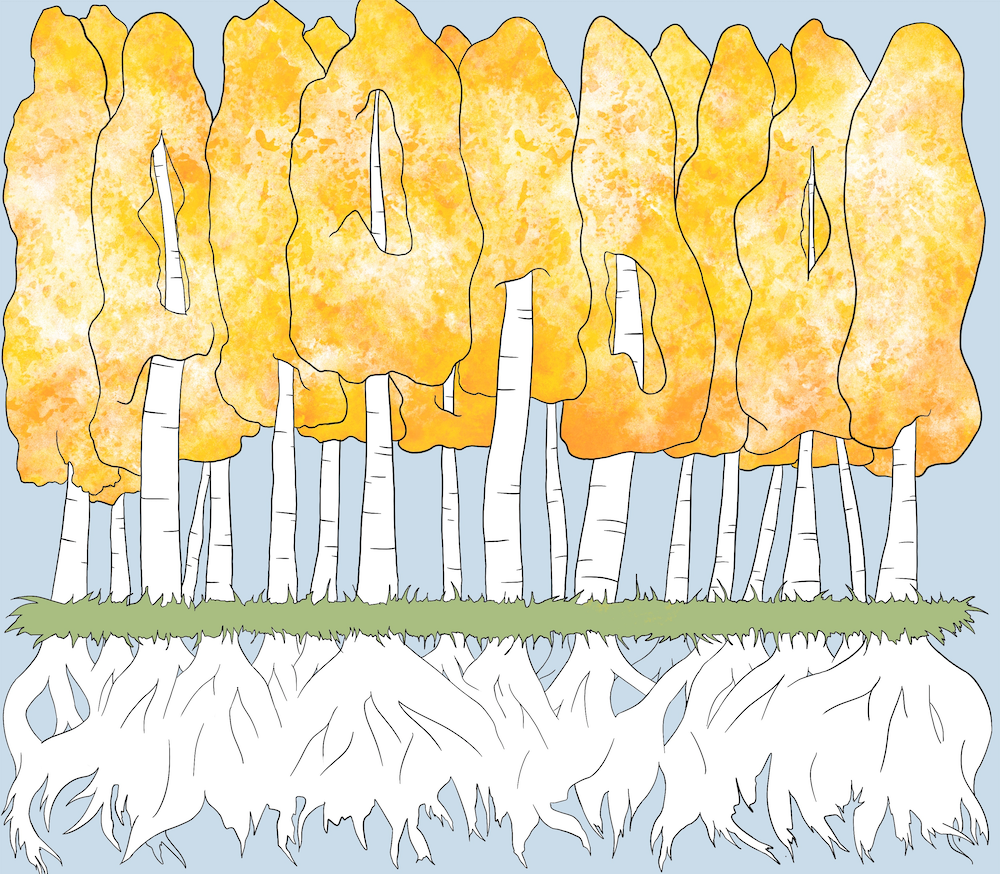The land’o Pando
May 6, 2021
 This
piece represents the opinion of the author
.
This
piece represents the opinion of the author
.
 Sophie Lipset
Sophie LipsetIf you are like me, you were taught at an early age that the largest organism on earth is the blue whale. Well, get ready for your mind to be blown: we were taught a lie. Look out, blue whale—there’s a new sheriff in town. His name’s Pando, and he’s a tree.
That’s right. The largest known organism on the planet is a tree, or rather a system of trees. Ah, the shame of being outranked by a bunch of oversized sticks. The blue whale is definitely punching the air right now.
Pando is an aspen clone located in the Utah mountain basin of Fishlake National Forest. It comprises 40,000 aspen trees with the same root system, spanning over 106 acres and weighing about 13 million pounds. It was first discovered in the 1970s that Pando is a single organism, and it was named after the Latin word meaning “I spread.” Research has since shown that Pando spawned from a singular seed at the end of the last ice age (about 2.6 million years ago), making all the aspens in the stand genetically identical. Each new sapling of Pando thus arises not from a new seed, but from the existing root structure.
This affectionately-nicknamed “trembling giant” has endured plenty over the thousands of years it has been alive. Scientists have found that it has been proverbially and literally tried by fire on at least one occasion, but the exceptional WATs (Wet-A$$ Trunks) particular to aspens, as well as fire-stimulated regeneration, prevented Pando from suffering significant damage. Pando is also remarkably resilient because its constituent trees cooperate to sustain one another. If one of the trees in the system is ailing, extra resources will be diverted to that individual. The conjoined nature of the aspen stand also makes each tree attuned to the same biochemical clock, allowing Pando’s foliage to change color all at once. In autumn, Pando is uniformly a dazzling shade of yellow.
Recently, Pando has resurfaced in science news, because of its demise rather than its incredible vitality. The parks service has discovered that Pando is weakening from the attacks of both insects and disease. Pando is also no longer regenerating at the frequency it should be. Researchers have pointed to the mule deer as the main culprit in this regeneration issue.
Due to efforts by humans to eliminate the predator population in the national forest, the mule deer has thrived in Fishlake. These animals feed on Pando’s saplings before they can reach maturity, making it difficult for Pando to replace its gradually dying stock. Pando’s current condition can thus be thought of as a collective of childless elders (who are simultaneously conjoined and identical siblings).
Methods such as fencing and controlled burning are being employed to help keep the deer away and stimulate regeneration, but efforts have achieved minimal success thus far. However, this has not dissuaded state park workers from continuing to try to keep Pando alive and propagating. It is my hope that Pando will be around for at least a few hundred years more if only to keep the blue whale’s ego in check.

Comments
Before submitting a comment, please review our comment policy. Some key points from the policy: